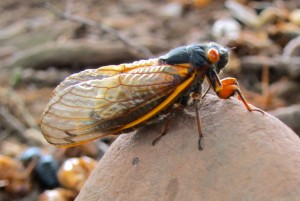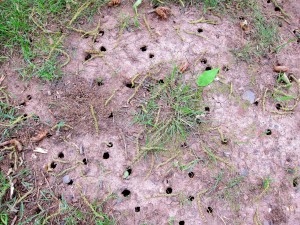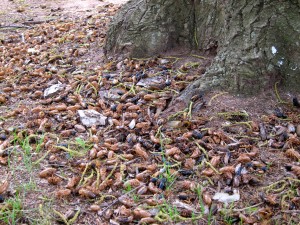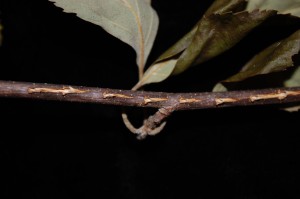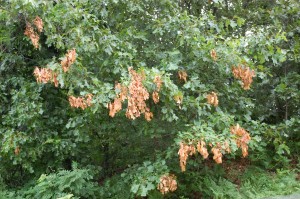You’ve got to suffer if you want to sing the blues… and some of us in certain parts of the state have been suffering the infernal din of the periodical cicadas since late-May.
Except for the Jersey mosquito, no other insect demands as much attention as the periodical cicada. Their appearance is sudden and their numbers are dramatic. Depending on your point of view, from yucky to the most awesome manifestation of nature, there is no denying the song they sing.
Periodical cicadas mate about one week after emerging from the soil. (wouldn’t you?) Each fertilized female begins egg-laying about a week later and lays nearly 600 eggs during her lifetime. Eggs are laid in a suitable host tree using a saw-like egg laying appendage called an ovipositor. The ovipositor is used to cut grooves into small diameter twigs on the outer canopies of trees. Twenty-four to twenty-eight eggs are laid in each groove. The process is repeated several times on each twig resulting in a line of small canker-like wounds.
About 80 species of trees and shrubs are suitable for egg laying. The most common trees we see with damage locally are oaks, however, pears, plums, and apples in suburban landscapes often bear the burden of the egg laying. After about 6 weeks, the eggs hatch and tiny nymphs fall to the ground where they dig in and carry out their life cycle for the next 17 years.
Adult and nymphal cicadas feed with piercing/sucking mouthparts on xylem fluid. This feeding does not affect trees and shrubs very much. The injury to trees is simply from the egg laying behavior and is starting to show up in the landscape now. Leaves turn brown and branch tips may die back, but all in all, the damage is minimal and I might say – well worth it.
Enjoy it while you can, brood X is not back again until 2021, and the current brood, brood II, won’t return until 2030. I don’t know about you, but I am sorry to see them go. Maybe I’ll go home and sooth my soul with a little Muddy Waters…
